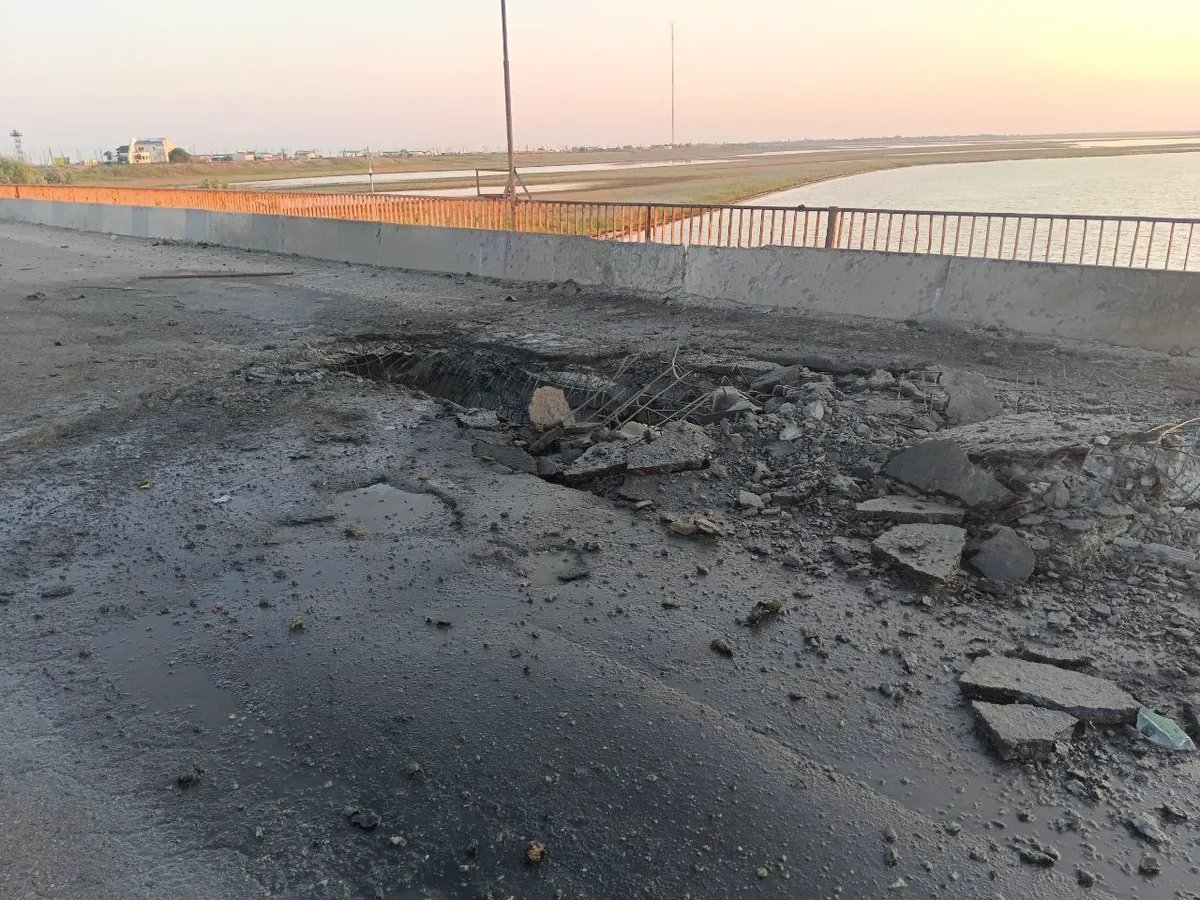
Chongar bridge after a strike. Photo: Russia-installed occupation official Vladimir Saldo / Telegram
The Ukraine war has been raging for 484 days. Air-raid sirens went off in most regions of the country overnight, reports emerged about explosions in Kharkiv, Kryvyi Rih, and Kremenchuk. The Chongar bridge that links Crimea with the Chongar Peninsula was targeted.
More than 20 “volunteer formations” have already signed contracts with the Russian Defence Ministry.
The Kakhovka hydroelectric dam collapse aftermath: water is no longer flowing into irrigation canals, the Dnipro’s downstream areas are in the state of an “eco-catastrophe”.
Read the biggest news overnight in Novaya-Europe’s 22 June round-up.
Explosions in Kryvyi Rih and Kharkiv. Air-raid sirens across Ukraine
Air-raid sirens sounded off in 11 regions of Ukraine. Media outlets also reported explosions in Kharkiv, Kryvyi Rih, Kremenchuk, as well as the Kirovohrad, Dnipro, and Poltava regions of the country.
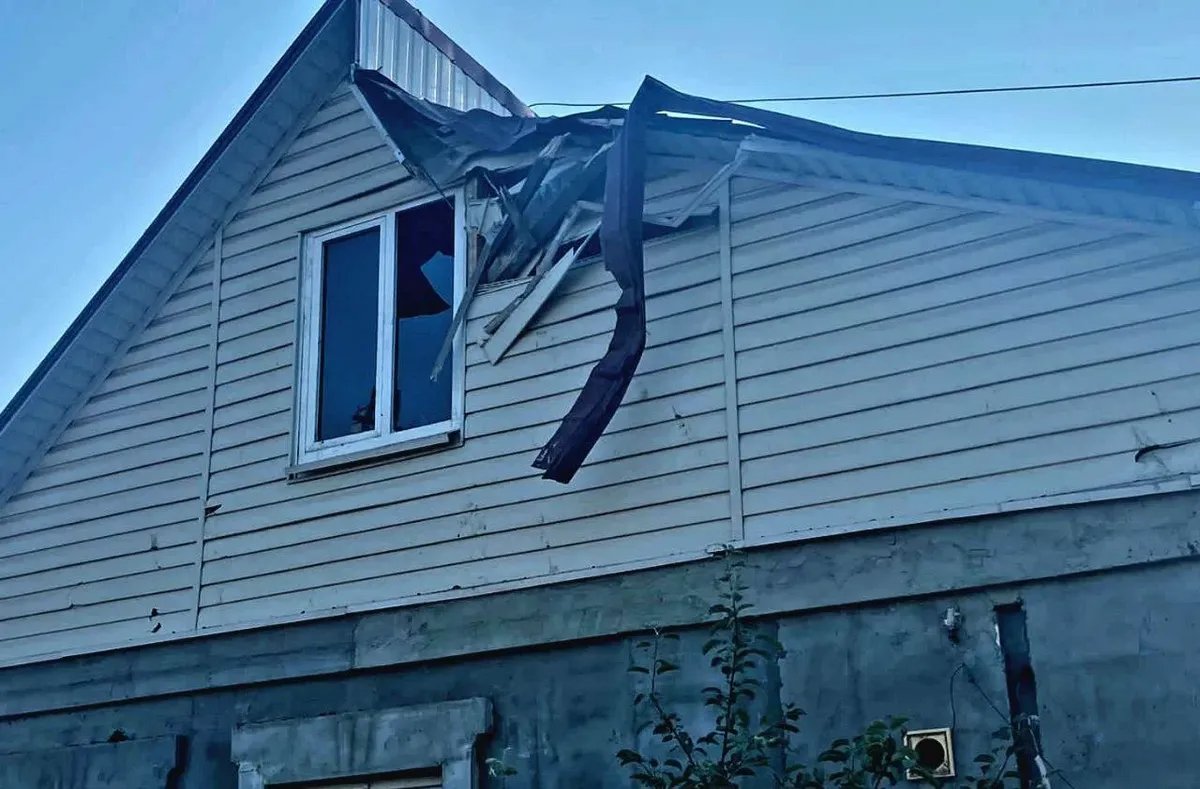
Aftermath of a strike on the Dnipro region. Photo: regional Governor Serhiy Lysak / Telegram
According to Ukrainian Telegram channels, the sirens were not live for long. Three kamikaze drones were downed over the Odesa region overnight but one did make it through.
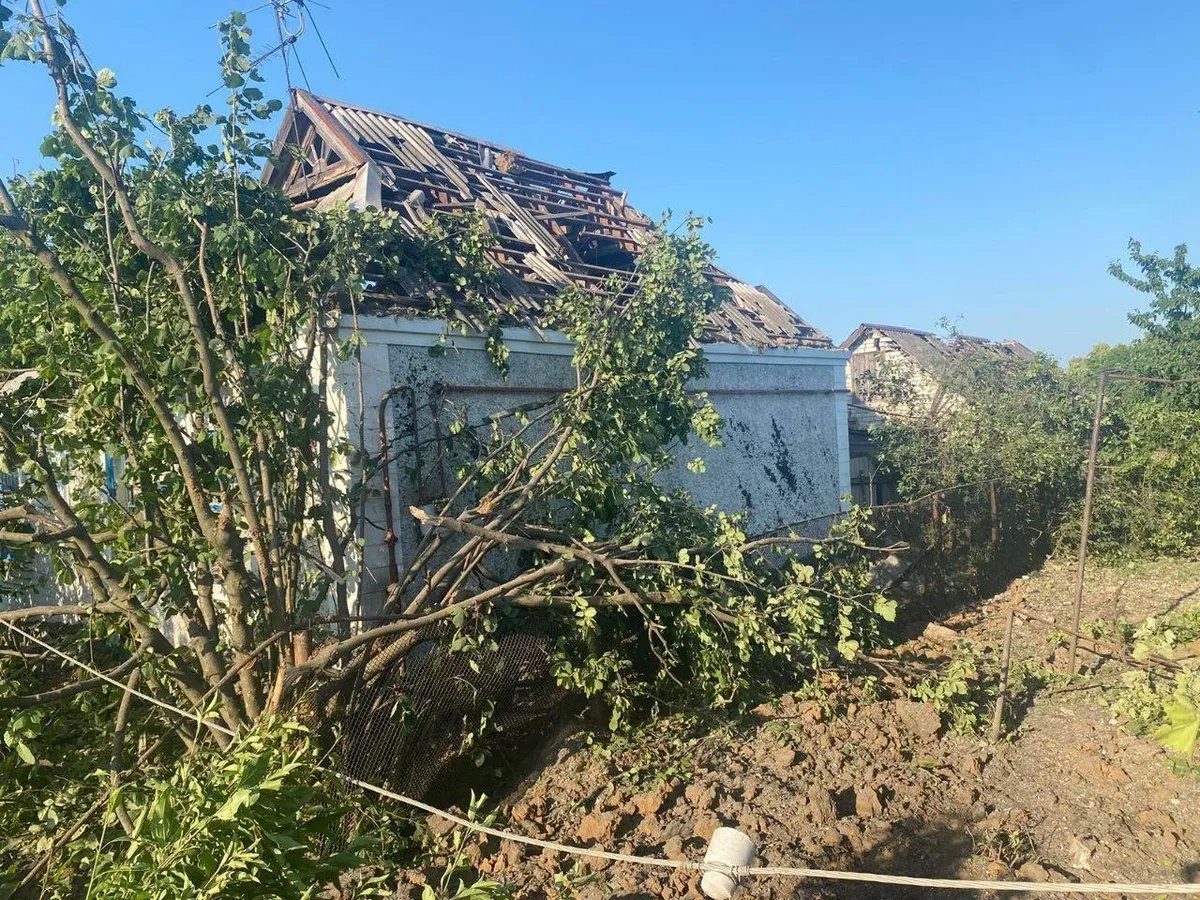
Aftermath of a strike on the Dnipro region. Photo: regional Governor Serhiy Lysak / Telegram
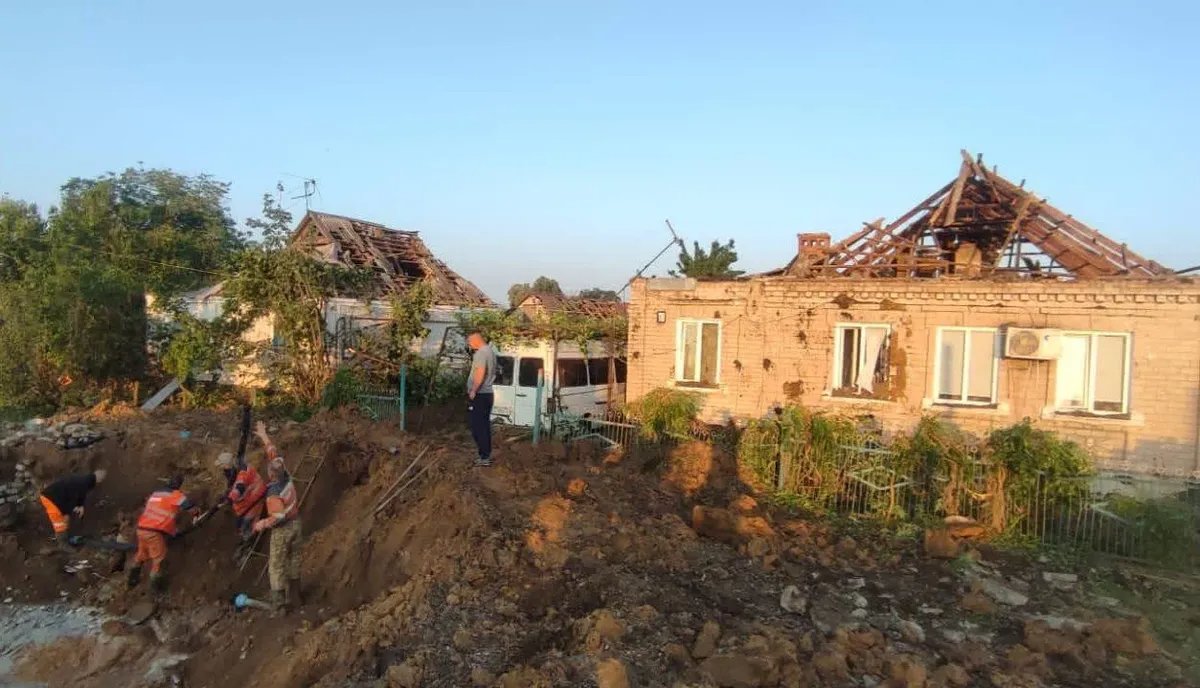
Aftermath of a strike on the Dnipro region. Photo: regional Governor Serhiy Lysak / Telegram
“We have three intercepted Shaheds in the Odesa region but, unfortunately, one did execute a strike. We are studying the details. The damage is not critical, no one was injured,” spokesperson for the South operational command Natalia Humeniuk said.
There is no information about anyone injured in the overnight attack.
Crimea’s Chongar bridge strike
A strike was conducted on the Chongar bridge located in Crimea in the early hours of 22 June, head of the annexed Ukrainian region Sergey Aksyonov said. “Bomb technicians are currently investigating the type of the explosive. Relevant agencies are inspecting the road,” he noted.
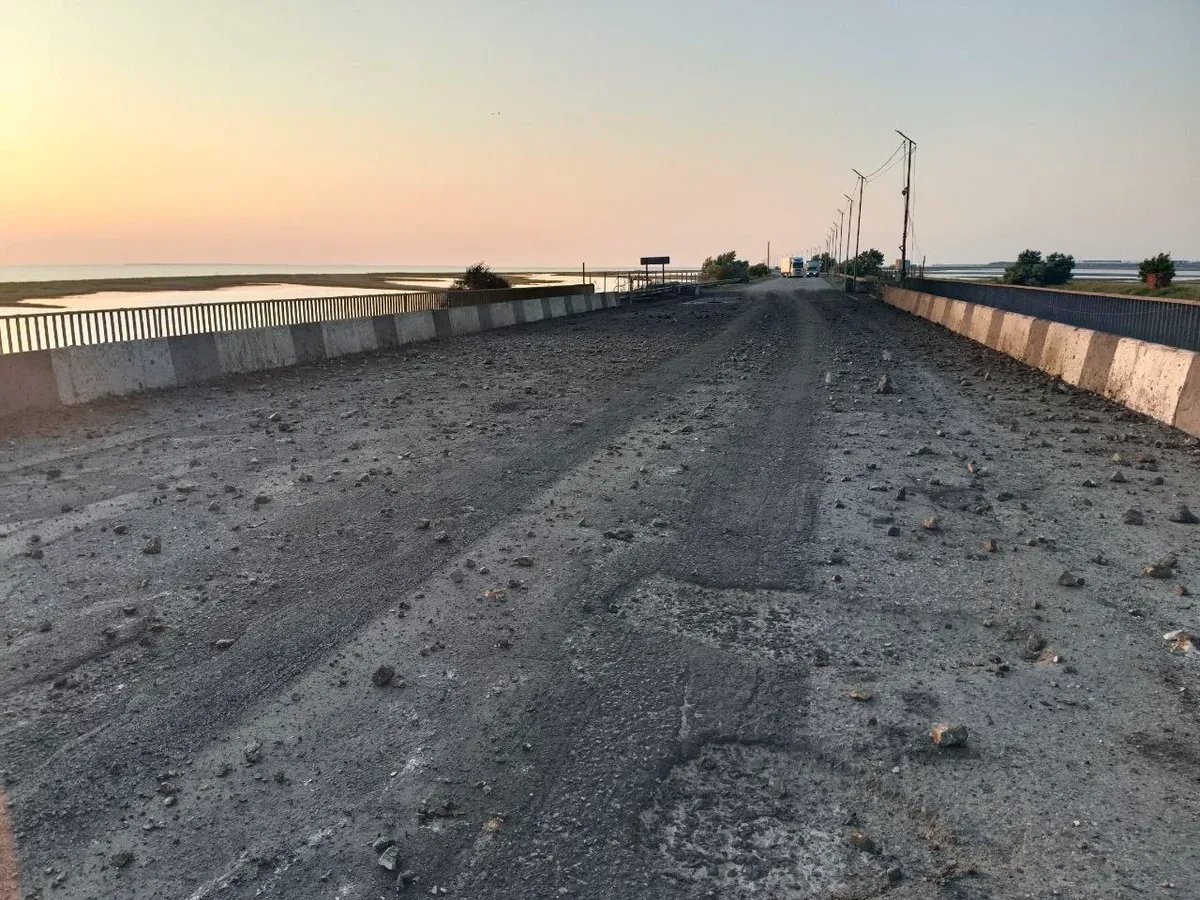
Chongar bridge strike aftermath. Russia-installed occupation official Vladimir Saldo / Telegram
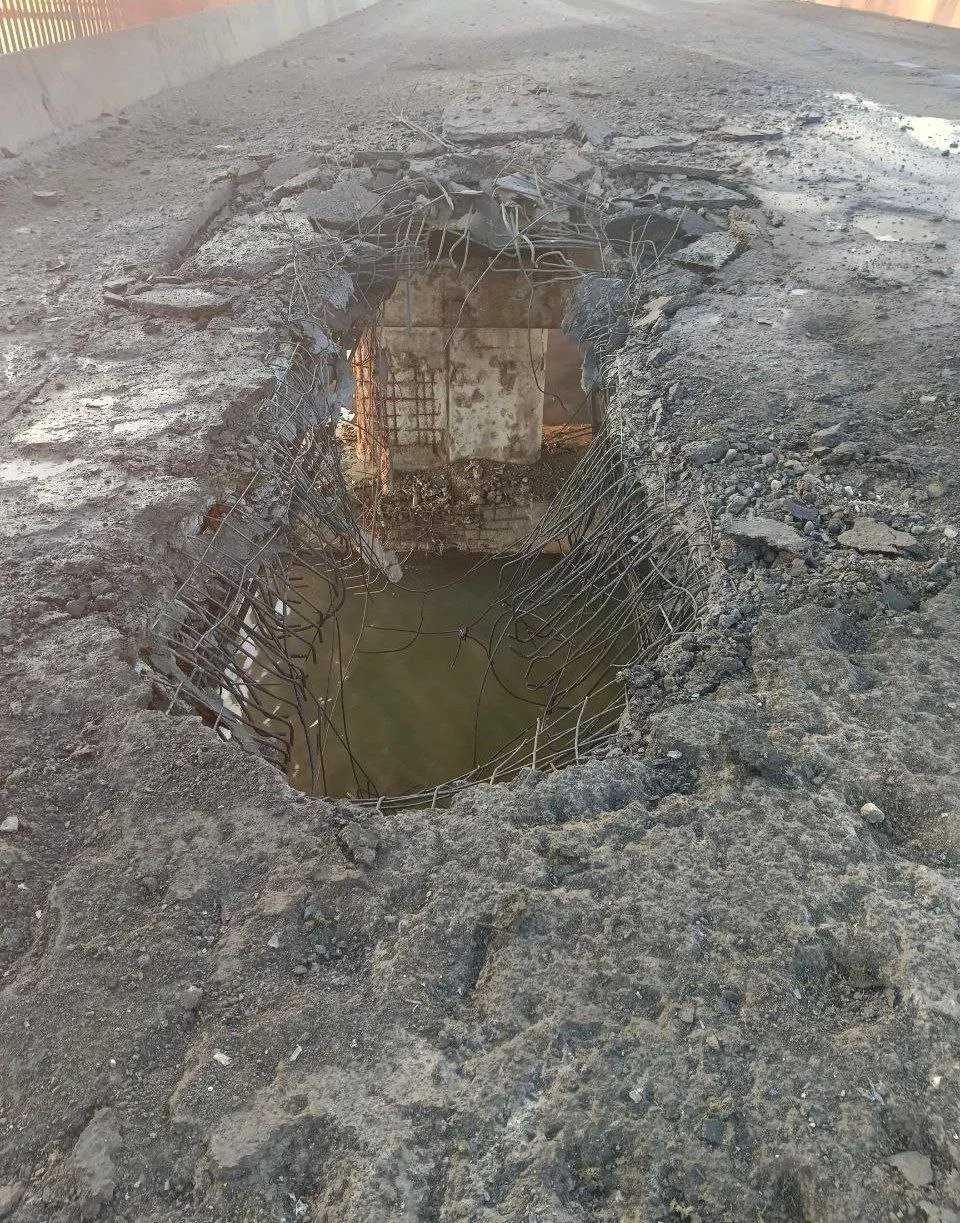
Chongar bridge strike aftermath. Russia-installed occupation official Vladimir Saldo / Telegram
According to Vladimir Saldo, a Russia-installed occupation authority official, the strike was conducted with Storm Shadow missiles. “The road is damaged on the bridges. The traffic between the Kherson region and Crimea is still flowing. Car transits via a reserve route have been organised temporarily,” he wrote.
The Chongar bridges link the Tyup-Dzhankoi (Crimea) and the Chongar Peninsulas (Kherson region).
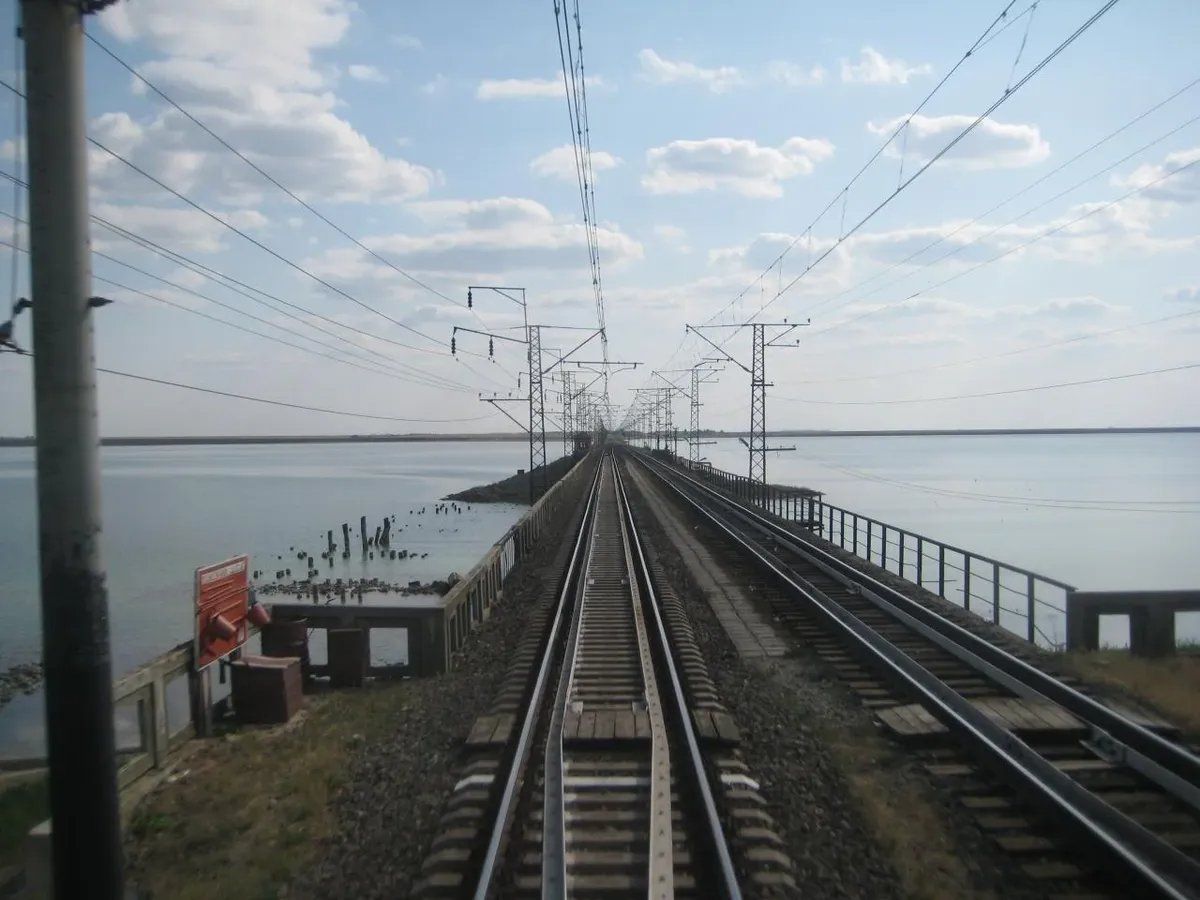
The Chongar railway bridge and dam, north view. Photo: Wikimedia Commons
The road through Chongar is the shortest way from Crimea to Melitopol and further to the southern frontline where the Ukrainian army is now trying to advance, BBC in Russian reports.
More than 20 “volunteer formations” sign contracts with Russia’s Defence Ministry
Four more “volunteer units” stationed in the active combat zone have signed contracts with the Russian Defence Ministry according to the agency. Their names and deployment areas are not disclosed.
“Signing this contract with the Defence Ministry guarantees us the same benefits and privileges of participants in the special military operation like the rest of the service members. Could we demand this from the state? No, because we are volunteers. But the state itself made a concession to give us these benefits,” the Defence Ministry quoted the head of one unnamed “volunteer battalion” as saying.
On 10 June, Russian Defence Minister Sergey Shoigu signed an order requiring all “volunteer units” to sign a contract with the ministry by 1 July. Wagner Group chief Yevgeny Prigozhin quickly rejected the idea. In particular, Ramzan Kadyrov’s Akhmat volunteer squad has already signed a contract with the ministry.
Kakhovka dam collapse aftermath: no water for irrigation
Following the breakdown of the Kakhovka hydroelectric dam, the flow of water to four critical irrigation systems has been interrupted. These systems service over half a million hectares of agricultural land in Ukraine, as reported by BBC in Russian, referencing satellite images.
Since the incident occurred two weeks ago, the Kakhovka reservoir has become increasingly shallow, to the point where water is no longer reaching the entrances of the canals carved from it, including the North Crimean Canal.
Water from these canals was responsible for irrigating approximately 5,800 sq. km. of fields on both sides of the Dnipro River. According to Ukrainian authorities, these fields produce around two million tonnes of grain and sunflower seeds annually.
BBC in Russian reports that the Kakhovka reservoir is now “virtually nonexistent”, causing the Dnipro to revert to its original stream path and leaving some canals dry.
Occupation authorities: Dnipro’s downstream areas facing “ecological catastrophe”
The Lower Dnipro areas are now experiencing an “ecological catastrophe” following the Kakhovka dam collapse, Russia-installed occupation authority chief Vladimir Saldo noted.
“The Lower Dnipro is now facing an ecological catastrophe,” he said. According to him, there are a lot of birds who “indiscriminately grab fish that died out of water and carry it further”.
“Everything that is now in the Dnipro ends up in the water and carried further to the Black Sea. It flows further downstream towards Odesa, Romania, and Bulgaria. Ecological difficulties are also possible there, very serious ones, linked to the water contamination,” Saldo added.
The Russian Finance Ministry classifies operational data on federal budget expenditure
The Bell reports that the government portal used by the Russian Finance Ministry to publish budget reports no longer has the data on the federal budget spending.
The information spreadsheet was removed on 21 June and was not reintroduced the next day.
The Russian authorities started to classify economic data breakdowns and benchmark reports almost immediately after the full-scale Ukraine war began. According to The Bell, the confidential part of Russia’s expenditures already topped three trillion rubles (€32.6 billion), ranking it first among all the national public spending articles.
